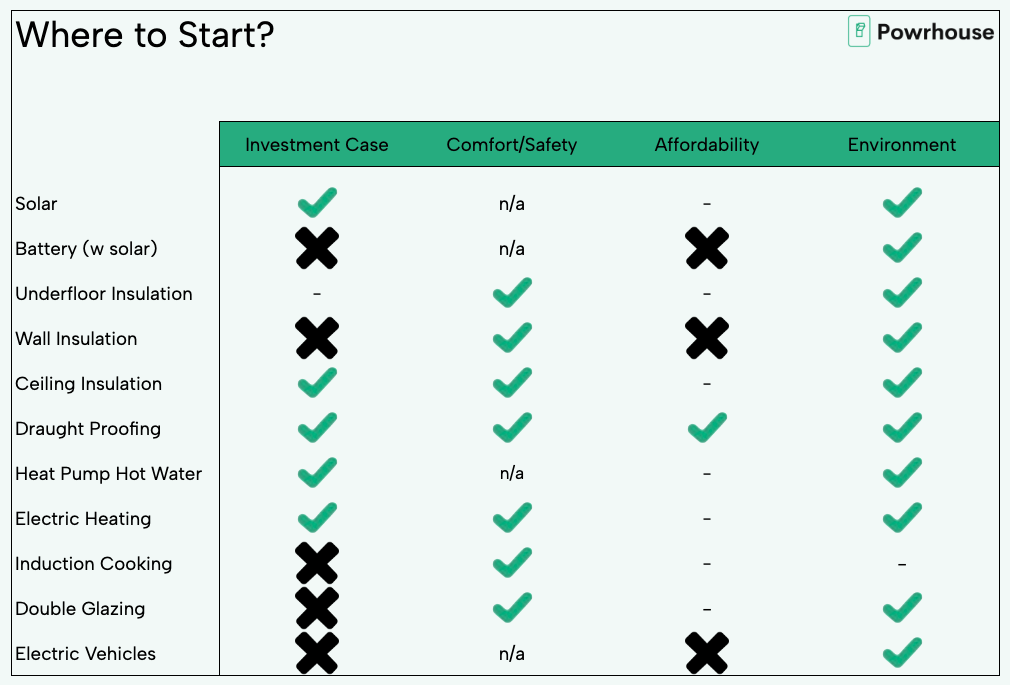Powrhouse exists to help Australian households electrify their homes and appliances. Making the switch can be difficult. There’s no shortage of wonderful information out there on electrify this, electrify that, but it’s not always clear where we should start. Which changes will save the most emissions, which changes will save the most money and in what order should we do them?
Enter the Powrhouse team. We’re here to help.
As part of our helpful Resources, we’ve prepared the guide below to summarise a range of Powr Moves.
We must stress that this is a guide only. The guide below considers a typical scenario and takes into account averages that we have found throughout our research. The answer will vary for each household, with two exceptions – solar and draught proofing.
With recent and seemingly never ending increases in electricity prices, solar is almost certainly the best place to start for houses with suitable roofs. Draught proofing is also a likely contender, given its low cost and high impact on saving energy.
One of the key factors we often refer to in our Research is “Length of Stay” – how long you plan to stay in your current household? Almost all Powr Moves are ticks for people planning on living in a home for longer than ten years. The question then becomes in what order you should make your Powr Moves. The table below considers a typical length of stay of 10 years.

Some notes:
- It pays to be Powrhouse Practical. We stress being practical in making your Powr Moves. For example, double glazed windows don’t necessarily need to be installed throughout the whole house – it might be a sound investment decision to double glaze the living room and kitchen windows. Another example is a portable induction cooktop.
- Our classifications are based on individual changes to already existing households, like switching gas hot water for heat pump hot water. Almost all the Powr Moves above are ticks for new home builds or substantial renovations. A great example of this is wall insulation. Replacing wall insulation in an existing house is difficult. It’s a messy job which becomes expensive with many trades involved. For a substantial renovation or new home build, it’s a no brainer and indeed often a requirement of planning permits.
Please also see our article on Financial Calculations, where we set out the initial investment, payback period and expected returns for each Powr Move.


 Subscribe to Our
Subscribe to Our